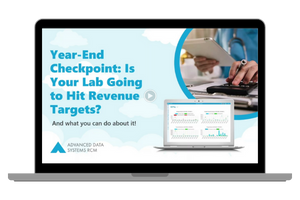PAMA 2026: What Labs Need to Do Now to Protect Revenue
The Clock Is Already Ticking
The next round of PAMA reimbursement cuts takes effect in 2026, but the data that determines those rates is being collected throughout 2025. That means the decisions you make this year—how you map payers, report rates, and validate contracts—will directly shape your revenue through 2029.
It’s the most consequential reporting cycle since 2018, and many labs still aren’t ready.
Understanding what’s changing, and when, is the key to avoiding locked-in underpayments.
The PAMA Landscape in 2025–2026
Under the updated Clinical Laboratory Fee Schedule (CLFS):
- Up to 800 tests face as much as 15 percent reimbursement reduction starting in 2026.
- Cuts are capped at 0 percent for 2025, then 15 percent annually from 2026–2028.
- The RESULTS Act—which could limit cuts to 5 percent—remains stalled in Congress.
For context, a 10 percent cut to high-volume tests like TSH, CMP, or CBC can translate to six-figure revenue losses for mid-sized labs.
Why Payer Mapping Matters More Than Ever
CMS calculates market rates based on the payer data you report. If that data is incomplete or inaccurate—say, missing certain commercial payers or misaligned CPT codes—you’re effectively setting your own reimbursement floor for the next three years.
Common errors we see include:
- Outdated NPI or Tax ID linkages.
- Mismatched payer categories between LIS and billing systems.
- Manual data entry during rate aggregation.
Each error may seem minor, but together they can skew your averages downward—locking in chronic underpayment through 2029.
CLIA’s Digital Transition Adds Pressure
Beginning March 1, 2026, CLIA will become entirely electronic. Labs must submit and manage all certificates, renewals, and fee payments online; mailed paper coupons will be discontinued.
This means your administrative data must be current and your internal systems integrated.
Operationally, CLIA modernization will benefit labs long term, but in the short term it demands IT readiness, updated contact hierarchies, and accurate Tax ID records.
Preparing for Both at Once
PAMA and CLIA changes overlap, which makes the coming year a logistical challenge. The best approach is to integrate compliance prep with revenue strategy instead of treating them as separate projects.
ADS recommends starting with:
- Reimbursement Simulation. Model 2026 payments under multiple scenarios using updated payer data.
- Contract Re-evaluation. Identify contracts older than 18 months and renegotiate to match current market rates.
- Automation Integration. Use rule-based software to validate modifiers and Z-codes before claim submission.
- Readiness Audit. Complete the ADS PAMA Readiness Checklist to document proof of compliance and rate accuracy.
Labs that complete these steps by early Q2 2025 typically avoid double-work when CMS begins verification later in the year.
The Financial Impact of Delay
Every month of inaction increases exposure.
If your payer mappings are wrong in 2025, CMS won’t adjust them until 2029. That’s four years of reduced reimbursement—and four years of compounding cash-flow pressure.
Even if legislative relief arrives later, only properly submitted data can be corrected retroactively.
The takeaway: prevention is far cheaper than remediation.
How ADS Helps Labs Get Ahead
ADS’s compliance and revenue-optimization teams are working with laboratories nationwide to model risk under the coming PAMA structure.
Our services include:
- Automated Payer Mapping: AI tools that detect rate anomalies before submission.
- Modifier Audit Engine: Built-in logic for 91 modifier misuse, Z-code gaps, and ICD progression validation.
- Revenue Simulation: Forecast potential losses or gains under multiple reimbursement scenarios.
- Staff Training: Guidance for billing and compliance teams adapting to CLIA’s digital requirements.
Together, these safeguards turn compliance into a strategic advantage—protecting both revenue and credibility with regulators.
Watch the Briefing: The State of Lab Revenue 2026

ADS experts Christina Rosario and Jim O’Neil have created a concise, on-demand visual briefing to help labs navigate the dual pressures of PAMA 2026 and CLIA modernization.
In just a few minutes, you’ll see:
- How upcoming reimbursement cuts could impact your most common CPT codes
- How to verify payer data and prevent locked-in underpayments
- How automation and smarter analytics can strengthen compliance and cash flow
- The KPIs that signal true financial precision in a shifting revenue landscape
It’s not a webinar — it’s a visual, data-rich experience designed for
busy lab leaders who want clarity without the noise.
The Bottom Line
The next six months will define your lab’s next three years of reimbursement.
Waiting until 2026 to adapt will lock in losses that can’t be recovered.
By watching the briefing, auditing your payer data, and leveraging ADS’s Lab Health Check, your team can turn regulatory pressure into a strategic advantage.
Start now. Get compliant. Protect every dollar you’ve earned.
About Jim O'Neill
As the company’s Laboratory Services Business Development Manager, Jim has 30 years’ experience in LIS and financial systems including 20 years as the owner of CSS (Avalon LIS). With a Bachelor’s degree in information technology from Rowan University, Jim has worked / consulted with over 500 labs in the US and internationally in improving their LIS and financial solutions. Jim is genuinely people-oriented and civic-minded; he’s the former Mayor of Northfield NJ and is currently on the town’s council.


